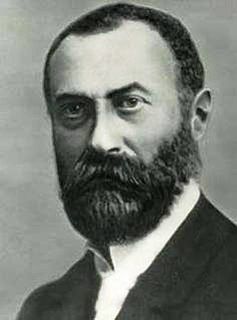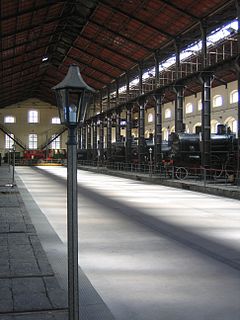
Kálmán Kandó de Egerfarmos et Sztregova was a Hungarian engineer, and a pioneer in the development of electric railway traction.

The FS Class E.550 was a class of three-phase electric locomotive used in Italy, introduced in the 20th century, which remained in service until 1965.

Tirano railway station (RFI) is one of two railway stations within the town and comune of Tirano, in the region of Lombardy, northern Italy. Opened in 1902, it is the terminus of the Tirano–Lecco railway.
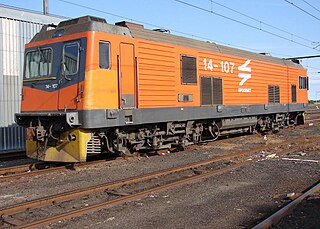
The Spoornet Class 14E1 of 1994 was a South African electric locomotive.

The Spoornet Class 14E of 1991 was a South African electric locomotive.

Sondrio railway station serves the town and comune of Sondrio, in the region of Lombardy, northern Italy. Opened in 1885, it is located on the Tirano–Lecco railway.
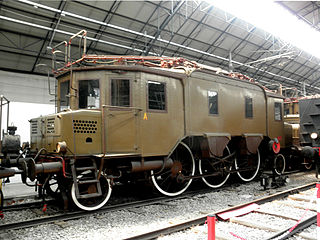
The FS Class E.330 was a small class of three-phase electric locomotive used in Italy, introduced in the 1910s.

The Tirano–Lecco railway is a railway line in Lombardy, Italy.
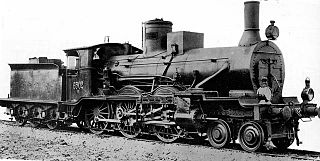
The Ferrovie dello Stato Italiane Class 650, formerly SFAI1181-1200 and Rete Mediterranea 300 Class, also known as "Vittorio Emanuele II", was the first steam locomotive in continental Europe to have the 4-6-0 'Ten-Wheeler' arrangement.
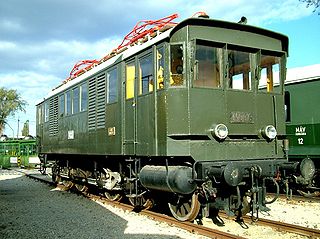
The MÁV Class V40 was an electric locomotive of the Hungarian State Railways (MÁV) and the first production electric locomotive using the Kandó system. It had a wheel arrangement of 1'D1' or 2-8-2 and a single traction motor driving through side rods.

The FS Class E.360 were electric locomotives of the Italian State Railways (FS), using three-phase alternating current, built for the operation of the Valtellina line. They were ordered by Rete Adriatica and were originally numbered RA 361–363. Italian railways were nationalized in 1905 and they then became FS E.361-363 They were leased to Swiss Federal Railways (SBB) in 1906 and returned to Italy in 1907.
The FS Class E.470 was an electric locomotive class of the state-owned Italian railway Ferrovie dello Stato. It was used on the Italian three-phase test line from Rome-Sulmona especially in express train service. After the end of the trial operation in 1945, the locomotives were scrapped, and no locomotive of the class has been preserved.
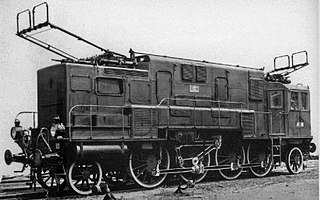
The FS Class E.471 locomotives were prototype three-phase AC electric locomotives designed for the Italian State Railways (FS). They constituted the first Italian experiment in using a phase converter. The final goal was to power them with single-phase alternating current, constituting the first case of a European locomotive of this type designed according to modern criteria. However, the difficulty of the development, and political interference, led to the abandonment of the project.

The Ferrovia della Valtellina is a railway line in Italy that runs from Lecco to Valtellina and Valchiavenna. It was opened in 1894 and electrified on the three-phase system in 1902. It is now electrified at 3 kV direct current and operated by Trenord.

The FS Class E.430 locomotives, initially classed as RA 34, were three-phase alternating current electric locomotives of the Italian railways. They were built for Ferrovia della Valtellina by Ganz and MÁVAG in 1901 and had a power output of 440 kW and a haulage capacity of 300 tons. One locomotive is preserved.
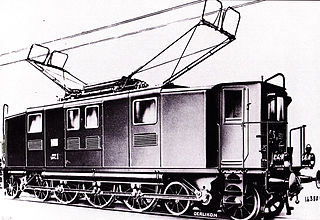
FS Class E.332 was a class of three-phase electric locomotives of the Italian State Railways (FS). They were used for the haulage of passenger trains between 1917 and 1963. Designed and built at the same time as the FS Class E.331, they represented an attempt by FS to extend the use of three-phase AC electric traction from primary to secondary routes. Their performance was disappointing and they were relegated to a marginal role, in which they remained despite several modifications.

FS Class E.333 was a class of electric locomotives of the Ferrovie dello Stato (FS), powered by three-phase alternating current, which were in service from 1923 to 1968. They were designed by Kálmán Kandó for hauling fast passenger trains. Having the same electrical equipment as the FS Class E.552 locomotives, they presented the same defects and had to be modified. After modification, they were able to carry out the services for which they were designed.







